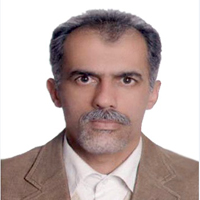Surface Erosion Estimation through Dendrogeomorphological Analysis and Investigating the Role of Land-use and Slope Direction on Erosion in Nachi Catchment
The annual loss of soil in the world is about 75 billion tons. In Iran, soil erosion is one of the most important environmental problems, and in Iran's catchments, soil erosion increased by 800% between 1951 and 2002. The significant decrease in the performance of Iran's catchments due to a large amount of erosion indicates the increasing necessity of monitoring and following up on this destructive phenomenon. Dendrogeomorphology is a technique that has been very successful in describing and determining geomorphological processes. Dendrogeomorphology is a very flexible method to assess soil erosion and can be used as a data source to determine the reliability of data obtained from direct estimation techniques. The purpose of this research is to investigate the state of sheet erosion in the Nachi watershed using the dendrogeomorphology technique on the oak tree's protruding roots as the region's dominant species. Considering the limited nature of such studies in Iran and the very fragile situation of the studied area, and the risk of filling up the reservoir of Zrebar Lake, which is very important from the point of view of the environment, it is necessary to study the situation of sheet erosion and soil wastage and sediment trans.
In order to achieve the research objectives, after collecting and preparing the primary information, including written information, statistical data, maps, and pictures, a preliminary area survey was carried out, and sampling sites were selected. The samples were prepared according to the program, based on the status of the catchment (according to the land use of the catchment and the direction of the range, the desired work units were selected in places with exposed roots). Based on this, different samples were taken in two different forests, agriculture uses, and western, eastern, and southern directions. All the samples were prepared from the oak tree species, which is the absolute majority in the study area. Finally, 64 samples were selected from the collected samples that could analyze the growth rings' anatomy. Discs harvested from the roots were used to reveal the vegetative rings of the discs by polishing and cutting the surfaces. Using a sanding machine, it was gradually polished with different grades to clear the growth ring border. Then, the disks were measured in the laboratory to determine the first year of root emergence and to determine the width of vegetative rings using a Lin-Tab 5 device equipped with a binocular microscope and specialized T-Sap chronology software with an accuracy of 0.01 mm.
This research showed that in the Nachi catchment, surface soil erosion in agricultural use (average erosion rate 2.43 mm per year) compared to forest use (average erosion rate 0.6 mm per year) is about 4 times. The results of the statistical tests also showed that the type of land use affects the average annual surface erosion rate in the studied basin. Also, this study found that different geographical directions do not affect the average annual surface erosion rate of the Nachi catchment. Comparing erosion values in agricultural and forest use shows the importance of natural covers' protective and important role in preserving the soil and preventing its erosion and wastage. Various studies in the world and Iran have shown that in recent decades, there has been an increasing increase in land use changes, that these changes have the basis of increasing runoff and affecting the amount of soil loss, comparing erosion in the agricultural area with the forest area, showing the protective and important role of the covers. Natural and forests have a valuable role in preserving the soil and preventing erosion and wastage of soil.
The results of this research reveal the necessity of paying more attention to studies on the possibility of modification and change of land use in these areas. The change in land use and the negative effects caused by human interference are not only in the basin itself but also in places outside the occurrence of erosion in the form of accumulation on high-quality agricultural lands, pastures, water storage sources, and irrigated canals. Also, the creation of pollution by sediments and heavy metals and accompanying chemicals, especially the threat to the very fragile ecosystem of Zrebar Lake, is more evident today than ever before. It is suggested to use another method parallel to this method in future works to validate the obtained erosion rate. In future studies, sampling should also be done from the northern slopes for a more detailed investigation of the effect of the slope directions on soil erosion.
- حق عضویت دریافتی صرف حمایت از نشریات عضو و نگهداری، تکمیل و توسعه مگیران میشود.
- پرداخت حق اشتراک و دانلود مقالات اجازه بازنشر آن در سایر رسانههای چاپی و دیجیتال را به کاربر نمیدهد.


